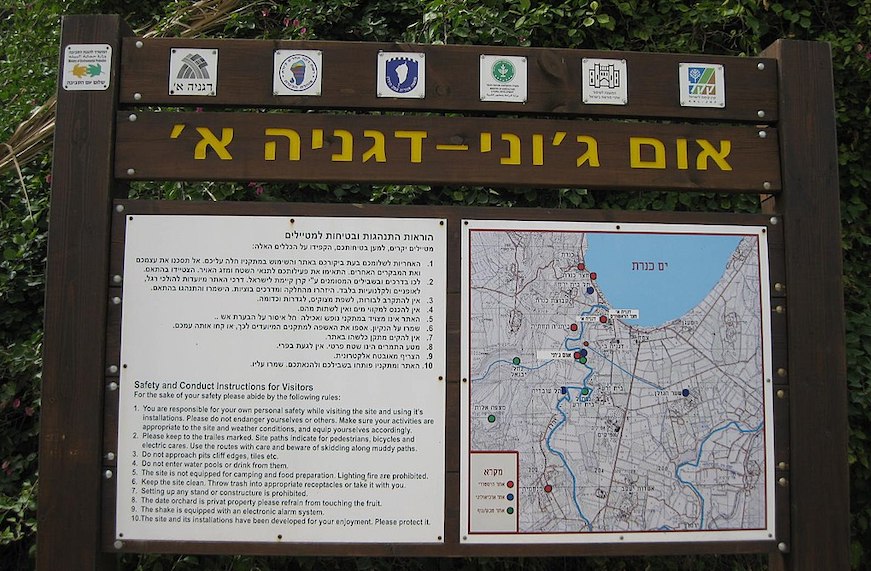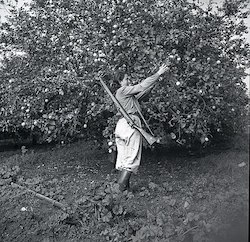A Gathering of Exiles
Of all the community experiments in the world, Israel has the most famous. A socialist Zionist farm, otherwise known as the kibbutz. Just 30 years ago, young Americans and Europeans used to come in their educational gap year to Israel and work on a kibbutz. It was an ideal opportunity for these young travellers. Room and board were provided, as was community and the thrill of meeting new people. Long days in the sun is good for anyone’s vanity. It was no different for these pasty-white sun-deprived youngsters who came from grey and cold countries, and could finally work on their tan.
“Literally meaning “a gathering” a kibbutz was an enterprise whose members agreed to equally share everything”
Literally meaning “a gathering” a kibbutz was an enterprise whose members agreed to equally share the profits, the wages, clothes, food and even their children. Farm managers earned the same as those who mopped the dining room floor and every decision was made as a group, usually at endless late-night meetings. The idea behind the kibbutz was to form a utopian community founded on socialist principles, and established on the soil of the Jewish homeland.
Young people were the founders of the kibbutzim. Degania, the first kibbutz, was established at the beginning of the 20th century by a dozen youngsters scarcely out of their teens. Just like the antisemitic Europe which they had left, their future in the land of Israel was also uncertain. Barely knowledgeable in agriculture, and contending with a blazing heat unknown to them back in the freezing cold of Eastern Europe, the youngsters had to till the land under the searing sun which scorched the earth of the Jordan Valley.
In Degania, the founders came childless and at first shared one house. A closely knit egalitarian community was soon created, and – unsurprisingly – children too. In the early decades leading up to and beyond the creation of the state of Israel, over 300 kibbutzim arose across the land. At its peak, one out of every ten Israelis was living on a kibbutz.
Central to kibbutz ideology were the ethics of land, work, and language. In Christian Europe, Jewish people had never been allowed to own land. Many trades were forbidden to Jews. To these new pioneers it was the Jewish religion, the tight community, the difference of language and the unfamiliarity of Jewish tradition which had made their Christian neighbours hostile. The Jewish people has been completely cut off from nature and imprisoned within city walls for two thousand years. Therefore, in the mindset of these new kibbutz pioneers, much of their old life was to be left behind. The land of Israel was a new world. The world of persecution and limited working opportunities was no more. These young people saw themselves as the “new Jew,” the Jew who could finally toil and own his own land.
Kibbutz life was all about work, and especially working on the land which was finally theirs. Work ensured security, productivity, satisfaction, a healthy community and future generations. It was work, therefore, which set them free – an idiom chillingly replicated by the Nazis just thirty years later when they hung on the gates of Auschwitz “Arbeit macht frei.”
“Children were raised in separate houses and allowed to be with their parents just a few hours a day”
Like any social movement, the kibbutz movement also came and went. It remained popular, maintaining steady growth until the 1970’s. Trouble in paradise first began with the collective child-rearing. In kibbutzim, family ties were seen as distasteful and the antithesis of the utopia of collectivism. Children were therefore raised in separate houses and allowed to be with their parents just a few hours a day. Some children enjoyed living in the children’s houses, but many did not. They hated saying goodbye to their parents when the time was up. No matter how cool and “collective” a parent may be, he or she will always be a parent. Parents wanted their children too. Arguments arose about collective child-rearing and caused great division in the kibbutzim.
The next crisis was laundry. No one had taken into consideration that most women at some point in life, like to choose an outfit or two. A kibbutz did not allow for those kinds of individual privileges. Dirty clothes were washed together and clean ones handed out in exchange that same day. It was one size fits all. Women, wanting to look nice for the odd occasion, began to ask for pocket money to buy their own clothes. Soon both men and women were asking for this and that, a privilege here and a privilege there. The pursuit of individualism ultimately led to privatisation and finally to the fatal blow for the kibbutzim.
It was in the 1970’s when the sturdy young comrades of the kibbutzim realised they were not exactly the same as, or in the same situation as, the early founders of these collective farms. Life had changed. Cities were growing and businesses sprouting up all over Israel. There was a wealth of opportunities and money to be made outside the kibbutz in the big wide world. It is hardly surprising that they wanted more from life. Most people do. They felt they were missing out. When opportunities knocked, the solidarity of kibbutz life was scared away. The majority of these kibbutz-raised kids started to leave and explore the world: and by “world” I mean cities in Israel.
Members leaving resulted in less people to do the jobs. With not enough workers, the kibbutzim began a public relations campaign to invite young Europeans and Americans to come and volunteer. But even that was not enough to sustain the kibbutzim. Many of them needed to borrow money, which lead to a debt crisis in the 1980’s and a series of government bailouts.
The 1990’s saw further growth and innovation in the Israeli economy. Kibbutzim began employing outside managers who had more business experience. They also turned away from agriculture which was becoming unprofitable and looked instead towards hi-tec. Wages changed too. Not everyone would receive the same salary. Now people would be paid according to skill level. It was a good and profitable move. One after the other, the kibbutzim began to be privatised. Each member received their humble house and an individual share in the factory or land.
In Israel today there are only a few kibbutzim which adhere to traditional socialist communal ideals, and even most of those are in the business of selling the little cottages that once belonged to members who are no longer there. With barely enough space to run around in the shower, some of these apartments are fetching as much – and more – than apartments in the cities. It’s all about location. Green grass and tranquil pastures, and a view out to the fields is a rarity in Israel and worth paying for.
Most of Israel’s first authors, politicians, generals, artists, poets, actors and journalists grew up in a kibbutz. Their works and nature are inseparable from kibbutz life. An Israel without the cultural influence of the kibbutz is like a lemonade without the lemons. It is unthinkable. Thus, the legendary kibbutz will always occupy a huge place in Israel’s cultural mosaic and history, in the minds of all Israelis, and even first-time visitors to the land.






